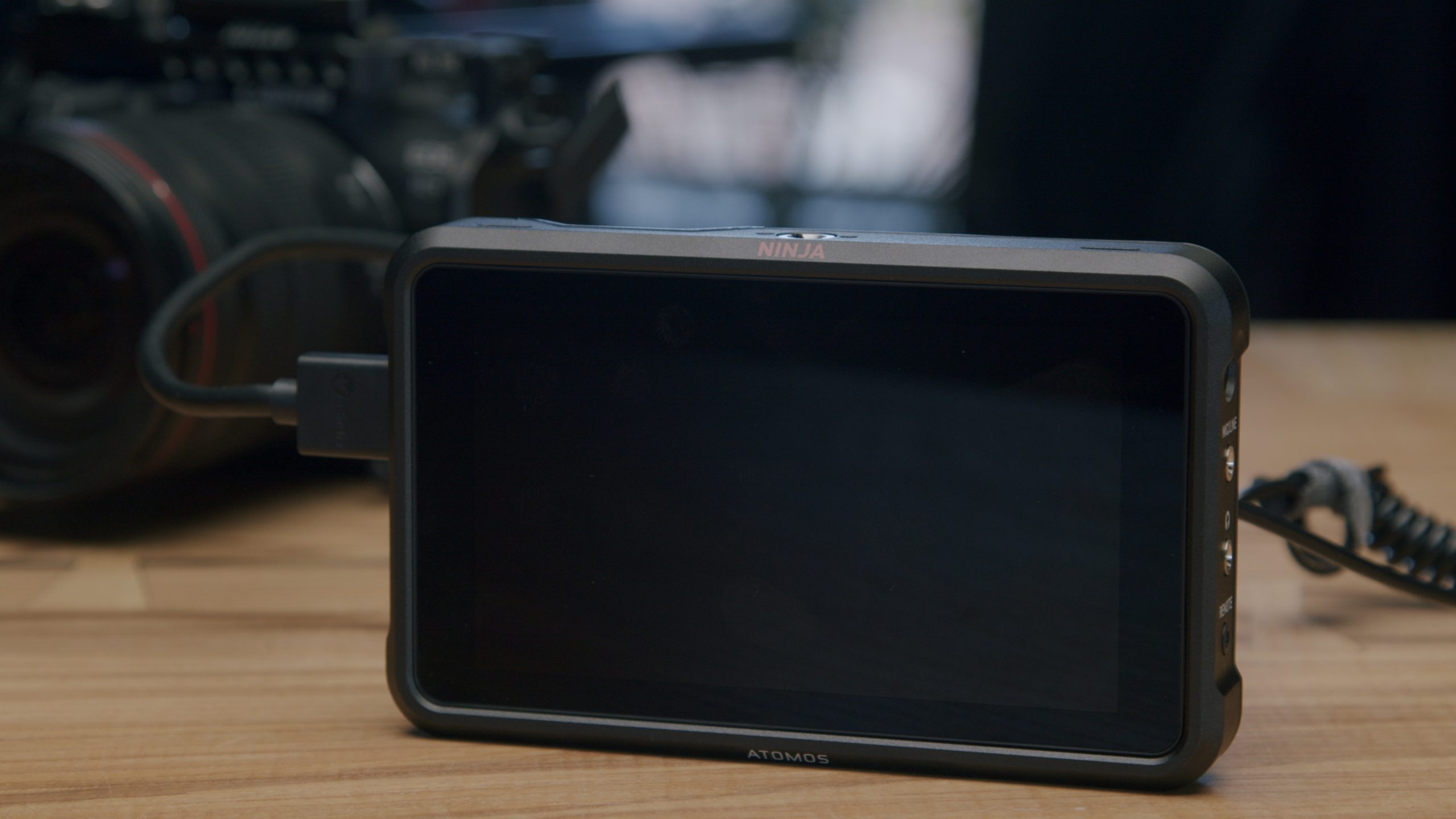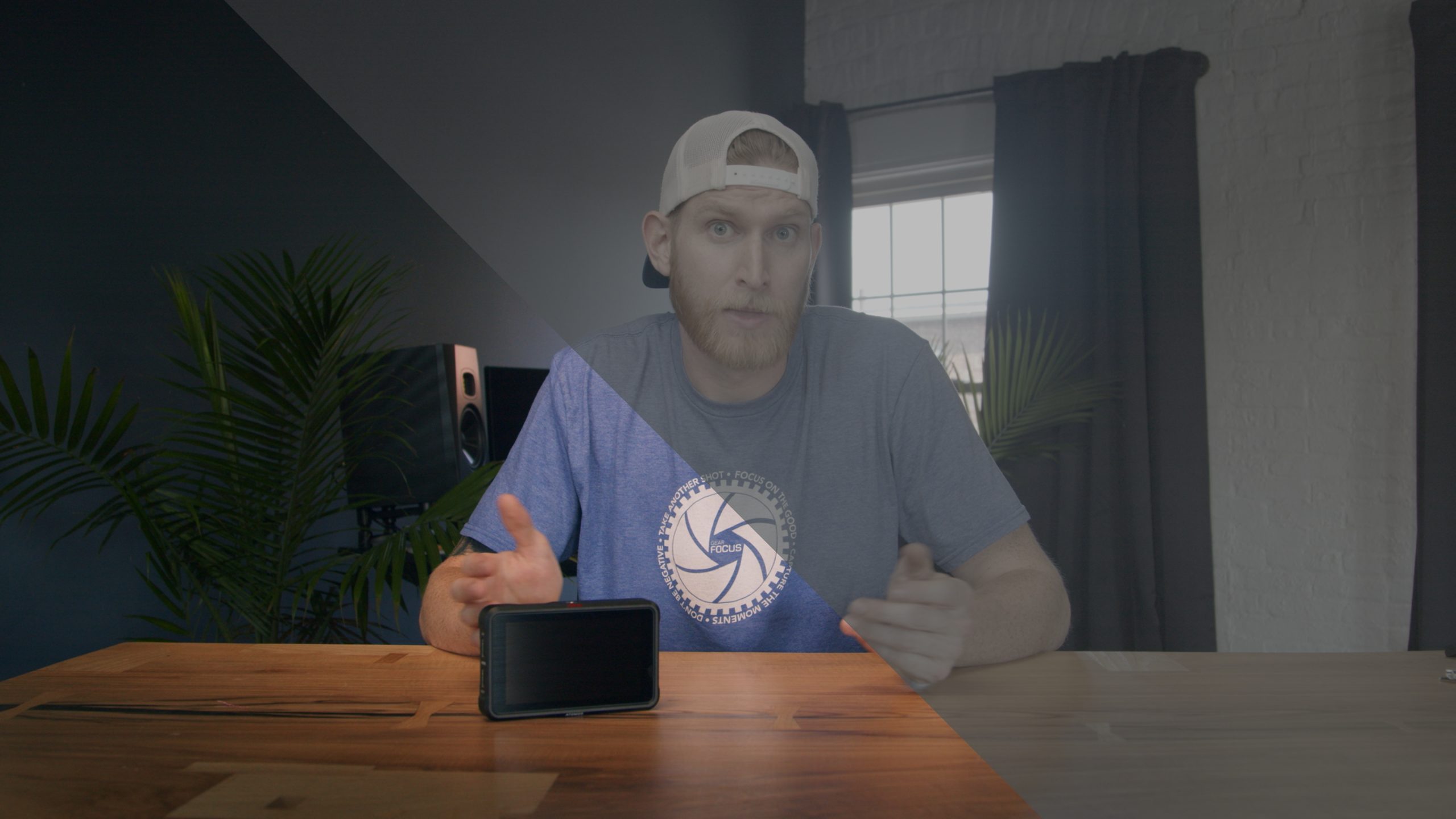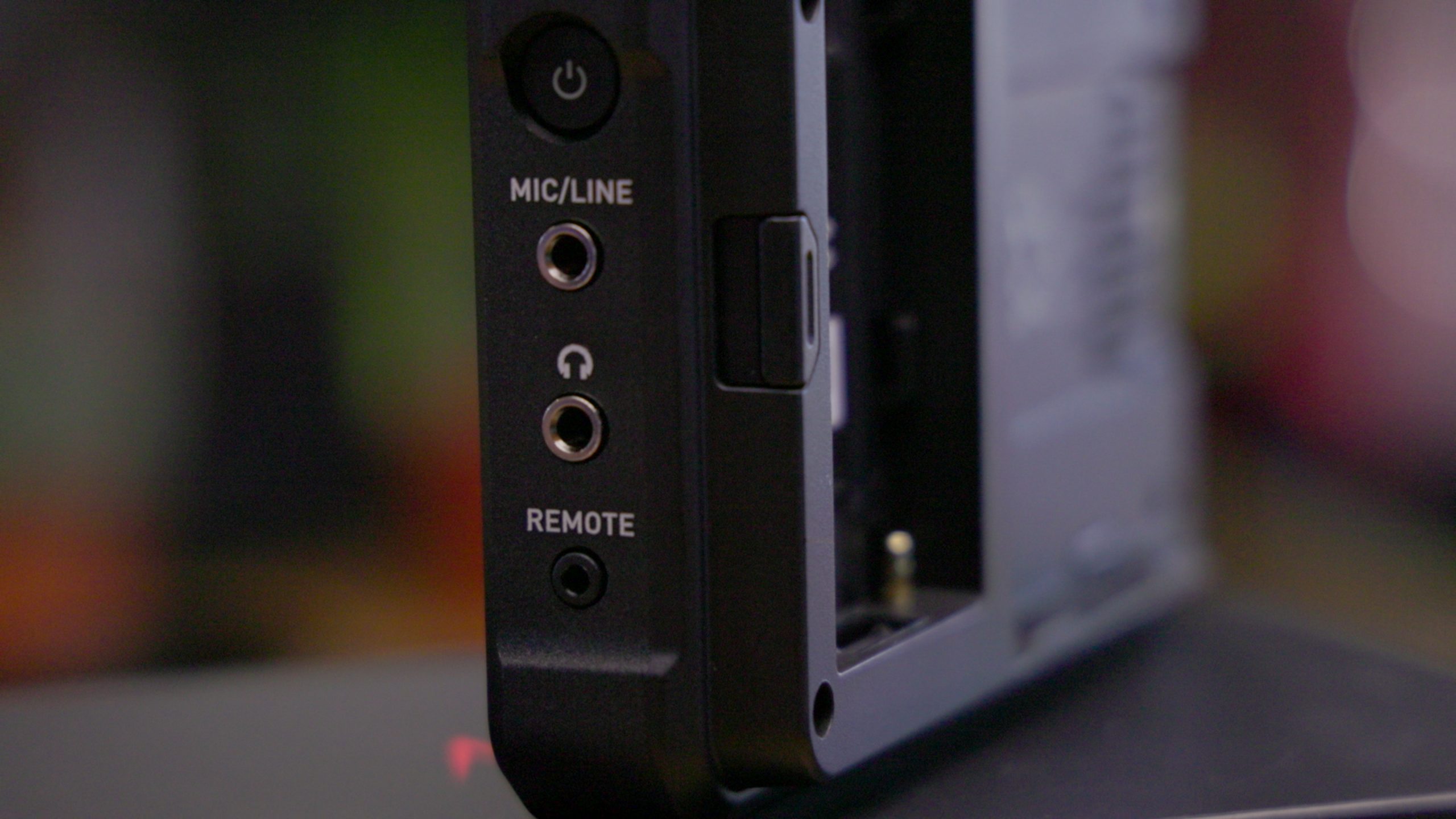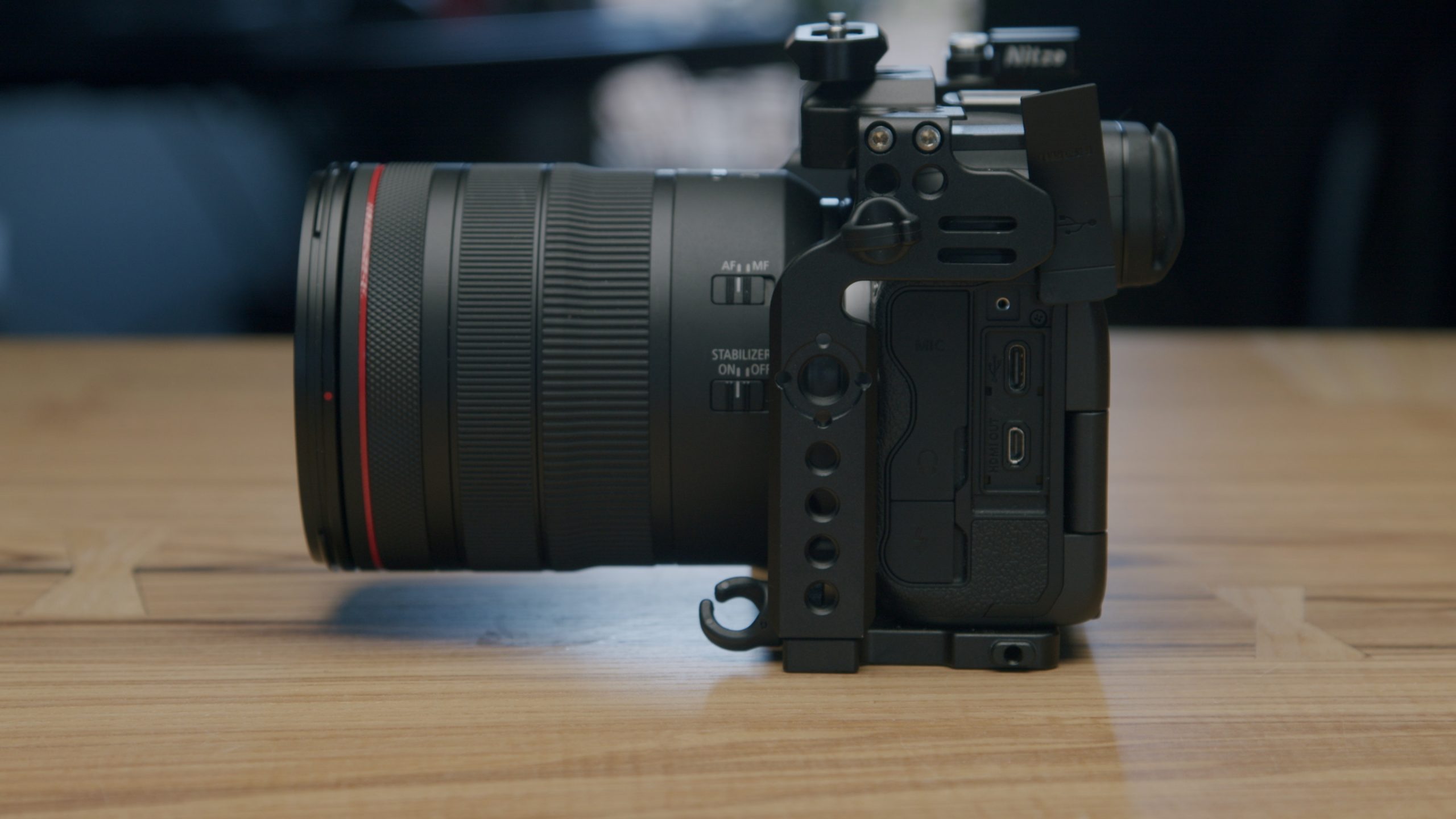If you’re like me, you are constantly chasing new ways to improve your shooting or your images. Over the last year, I’ve learned different ways to improve the gear that I use without having to spend a ton of money. There is one item in particular that I feel can really help a lot of people, and that is the Atomos Ninja V Recorder.
The Atomos Ninja V is an amazing upgrade to any camera! If you haven’t seen it already, check out our video review over on
Youtube!
This review is going to be split up into three main sections Monitor Performance, Recorder Performance and then how it all works specifically with the Canon R series.
Monitor Performace

First let’s jump into how the Ninja V works as a monitor. It is a 5.2 inch monitor with a
1000-nit display. It runs off of Sony F style batteries but comes with a power adapter to let you run it off of mains power or a V mount, like I do.
I’ve been using both this Ninja V and a Shinobi (essentially the same monitor without the recorder) for a while now. I’ve had the Shinobi on my Blackmagic for years. The 1000 not display has never not been bright enough for me. Even in direct sunlight, I can still see the display for critical focus. These monitors are also tough as nails. I’ve had monitors on stands get knocked over in the wind and they barely have a scratch on them!
The Ninja V also comes loaded with assist features like false color, focus peaking, exposure zebras, and frame guides. I’ve recently gotten in the habit of using false color while on set. It’s really helped me to nail exposure, particularly on skin tones. If you’ve ever overexposed skin on a shot before, you know how hard it is to get that detail back. If you’re not familiar with False Color, it’s definitely a feature you should look into! I also really like the edge focus features as well. This makes it much easier to see what’s actually in focus.
The frame guides can be really helpful to make sure your subject is properly framed if you know that’s how you’re going to export. There’s also an anamorphic desqueeze section that has various different desqueeze options like 1.33, 1.8, etc.
The Atomos Ninja V also has an HDMI loop out. Now, I wouldn’t really use this for an AC1 (focus pulling) monitor as there will be too much lag, but this would be great if you wanted to have a client or director’s monitor. The Hollyland Mars system is great for this purpose!
we can also import LUTs for monitoring as well. If you’ve ever tried monitoring in log, it’s very hard. It takes a lot of practice. But the bigger issue that I’ve found is most people outside of filmmaking know absolutely nothing about what Log is. All they think is “why does that look bad?” Log footage is very flat by design, but that makes it not very pleasing to look at. With an Atomos Monitor, we can use a LUT for viewing that is completely independent of recorded file. This way, we see the LUT applied, but its not “baked in” to the file. You can import several different luts if you intend to use several cameras. My favorite ones are the Rec.709 conversion luts from ButteryLuts.

The left side is graded while the right side is still in LOG
Recorder Functions
Now let’s jump into the recorder functions. With the Ninja V we can record Prores, ProResRAW, Avid DNxHD, and optional H.265/HVEC recording with a codec purchase. These options all allow us to have 10-bit color. At the time I’m filming this video in September of 2021, HVEC recording is still pretty new. It’s a very CPU heavy codec since there’s not any hardware decoding available yet. Hopefully that changes soon!
If you don’t know what I mean by “10-bit color” let me explain really quickly. Color bit depth is measured on each channel in the RGB spectrum. Essentially a “bit” is a step in color. In more technical terms, an 8-bit file works with RGB using 256 levels per channel, while 10-bit jumps up to 1,024 levels per channel. This means a 10-bit image can display up to 1.07 billion colors, while an 8-bit photo can only display 16.7 million. Basically, higher bit depth means more color information.
Using an Atomos Recorder means we also gain ProRes as a recording option. Prores is an industry standard codec, that comes with a lot of benefits. Even though I have cameras that record RAW, i often record in Prores. Uts an optimized codec and I’ve never had any playback issues in any NLE I use. ProRes can also hold a lot of information, especially in color. For the most part, 10-bit color is more than enough for most coloring scenerios.
On the audio side of things, we also gain an additional stereo audio recording channel giving us up to 4 mono channels of audio (2 HDMI, 2 external). A great use for this would be if you needed to have 4 people on camera talking.

Ninja V + Canon EOS R/R5/R6

Like I said earlier, I want to talk about the Atomos Ninja V specifically In conjunction with Canon R series since that’s where I have the most experience. Right off the bat, the Ninja V made me no longer want to sell my EOS R. My main camera is a BMPCC6k and I was using my R as a B cam. The more I used it the more the 8-bit color could no longer stand up, so I was going to buy another cinema camera, even though I knew that the EOS R has a 10-bit output over HDMI. But now, instead I paid $600 for a monitor/recorder and gave new life to my EOS R giving me 4K ProRes422 recording, which is the exact same format that I record on my Blackmagic.
One of the big issues I see people complain about with the R series is the recording limits. This isn’t necessarily only a Canon issue as most mirrorless and DSLR cameras have that 30-min recording limit. However, another added benefit of recording externally is that it eliminates the 30 min record limit that most of these cameras have. With an Atomos Recorder, you don’t have to worry about starting and stopping your recording in the middle of an interview or a wedding ceremony, you can just let it run like a cinema camera.
Remember how the R5 and R6 overheating when recording 4k was a big deal? Even after firmware updates, there were still overheating complaints. Well, now that no longer matters. Because the cameras aren’t recording internally, the won’t overheat and you get longer record times. Seems like a win win to me! And now with the updated firmware and select cameras we can record up to 4k ProRes Raw on the Ninja V and on the new Ninja V+ up to 8K RAW externally on the R5. One note real quick on ProResRAW though, if you are a Davinci Reaolve user, ProRes RAW won’t work. It does work in Premiere and in Final Cut, though.
The Atomos Ninja V is an amazing piece of gear that I think gets underrated. You can add so much power and flexibility to so many different cameras, it seems to be a no-brainer. Even at $599, the monitor features alone are worth the price of admission and the fact you get to add a recorder to that is incredible. The Atomos Ninja V is at the top of my list for gear in 2021!







